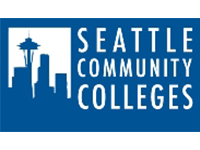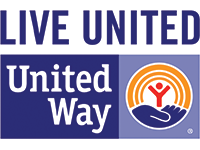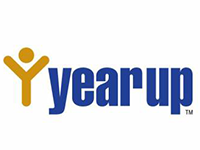How Well Is Texas Helping You Succeed?
•Anne Kim, Editor, Special Projects at the Washington Monthly
Historians in Texas mark Jan. 10, 1901, as the day modern Texas began — the day when the Lucas No. 1 well struck oil at the Spindletop field near Beaumont. As the authors of the Texas Almanac write: “The gusher spewed oil more than 100 feet into the air until it was capped nine days later. With that dramatic fanfare, Texas’ economy was wrenched from its rural, agricultural roots and flung headlong into the petroleum and industrial age.”
Since that fateful day at Spindletop, the mystique of Texas — as the land of big dreams, big wealth and unlimited opportunity — has become as outsized as the state itself. As a mecca for corporate America, Texas is now home to more than 50 Fortune 500 companies, including such corporate behemoths as Exxon Mobil, AT&T, Dell, Lockheed Martin, Hewlett-Packard and, of course, Texas Instruments. The state also boasts an outsized share of the nation’s millionaires, trailing only California, New York and Florida in the share of residents whose net worth tops $2 million. In the exclusive Houston neighborhood of River Oaks, where the median home price is $3.5 million, sprawling colonnaded estates fit for J.R. Ewing average more than 7,500 square feet of living space.
Without doubt, Texas is doing great by its corporate citizens and their executive elite. Texas Brags, a website run by the office of Gov. Rick Perry, puts it with typical Texas swagger: “Texas is a land of ongoing success and endless opportunity.”
But when it comes to the people of Texas vs. its companies, the promise of opportunity rings hollow for many.
Right off I-45 in Houston — across the freeway from the Lamborghini dealership — is Remington Ranch, a subdivision of cookie-cutter tract homes built mostly in 2005 and 2006 and now a casualty of the housing crash. Of the 30 properties for sale one day this fall, 15 were in foreclosure. The schools that serve this neighborhood — Ralph Eickenroht Elementary, Bammel Middle School and Andy Dekaney High — receive among the worst possible ratings from greatschools.org. At Eickenroht, for example, third-grade math scores in 2011 were 24 percentage points below the state average.
In the rest of Harris County, where Houston is situated, neighborhoods like Remington Ranch are much more typical than ones like River Oaks. With a population of more than 4 million, Harris is the largest county in Texas and the third-largest county in the United States. The Houston-based nonprofit Children at Risk says that as many as 27 percent of children in Harris County were living in poverty in 2010, while more than 19 percent lacked health insurance. Statewide, the Kaiser Family Foundation says 24 percent of Texans were uninsured in 2011, which is worse than in Mississippi. Education is a problem, too. In 2011, 24 percent of Harris County schools failed to meet federal standards for Adequate Yearly Progress under the No Child Left Behind Act. Only 19 percent of Texas students go on to finish college, according to a Children at Risk report.
Nevertheless, it’s the state’s business-friendly image that has garnered the greatest share of public accolades and fueled the state’s reputation for opportunity and economic growth.
Chief Executive magazine, for example, has ranked Texas the nation’s “best state for business” nine years running. Texas has also dominated CNBC’s “America’s Top States for Business” ranking since its launch in 2007, placing first in three of the last seven years and second in 2013. According to the running tally of these accolades maintained by the state, Texas also won the 2012 “Governors Cup” from Site Selection, “the magazine of corporate real estate strategy and area economic development.”
It’s certainly possible to overstate the impact these rankings and public recognition have had on the public policy choices Texas has made. But it’s also probably no coincidence that the “winning mix of low taxes, reasonable regulatory structure, fair court system and world-class workforce” that Texas Brags credits for the state’s success tracks almost precisely with the factors most praised by CNBC and other business-oriented media. Indeed, the most heavily weighted factor in CNBC’s rankings is the “cost of doing business” — that is, the rate of state and local taxes, as well as the cost of utilities and worker wages. As one CEO told Chief Executive, “The regulatory and tax environment in Texas makes it my first pick.”
But imagine if Texas — and every other state — got the spotlight not just for its success in growing business but for its ability to grow opportunities for its citizens, and at all levels of the income ladder. If states were graded not just on the basis of their corporate tax rates but also on the strength of their investments in education, how would Texas — and neighborhoods like Remington Ranch — be different?
Enter Opportunity Nation.
Two years ago, Opportunity Nation, a Boston-based nonprofit group, launched the Opportunity Index in partnership with the research group Measure of America. This index is an effort to shift the national conversation around opportunity and to redefine what opportunity means — not just in general, but in terms of who benefits. Their measure challenges the business-centered rankings of state opportunity and growth that now dominate the popular press. Their focus is on people — in particular, young people ages 16 to 24, who are finding opportunities much more difficult to come by today.
The Opportunity Index ranks states based on 16 indicators that Measure of America co-director Kristen Lewis says are essential to the “infrastructure of opportunity” for individuals. These indicators include not just the basics —the availability of jobs, affordable housing and quality education but also what a growing body of research shows is critical to upward mobility: social capital and civic life. These factors make up, at the individual level, the equivalent of the “business-friendly” environment that company-focused rankings measure.
The outcomes under the Opportunity Index approach, needless to say, are radically different from those of CNBC. Under the 2013 Opportunity Index, Texas — top-ranked in opportunities for business by CNBC — ranks 38th in opportunities for people. Meanwhile, Vermont, which invests nearly double what Texas does per pupil in K-12 education ($15,096 vs. $8,562), ranks first on the Opportunity Index and 32nd by CNBC.
On the other hand, some states, such as North Dakota, South Dakota and Nebraska, manage to do right by both their businesses and their people. These three states rank in the top 10 under both the Opportunity Index and CNBC, which means that creating opportunity for companies and creating it for individuals are not mutually exclusive propositions. Indeed, the best outcome of all is opportunity for individuals, broadly shared, along with robust economic growth and innovation.
The states that do best on the Opportunity Index are the states that have made investing in their people a top priority, with good schools and early childhood education, real efforts to help young people find jobs when they graduate or to keep them from dropping out, and a commitment to improving opportunity for all. Perhaps because of its investments in K-12 education, Vermont has the highest on-time high school graduation rate in the country, and more than 91 percent of its students leave school with a diploma.
Also significantly, the Opportunity Index highlights the increasing importance of geography and its impact on individual opportunity. For at least the past two decades, discussions around poverty and mobility have focused heavily on the role of choice and “personal responsibility.” The vast majority of Americans still believe that with enough hard work and ambition, almost anyone can attain the American Dream. But even if a person chooses to go to college to find a better job, that choice is meaningless if affordable colleges aren’t nearby or if a person is unprepared to succeed because of substandard schooling. While people can overcome their personal circumstances, they might not be able to overcome the ZIP code of their birth.
As Erin Currier, director of the Pew Economic Mobility Project, says: “More and more evidence shows stark differences in mobility depending on geography. Place matters.” New research by Harvard researchers Raj Chetty and his colleagues, for example, shows that income mobility is higher in places with more two-parent households, better schools and higher levels of civic engagement among residents. A 2013 study by the Center for American Progress found that people living in communities with a large middle class and less inequality are also more likely to have mobility.
Social capital, says Measure of America co-director Sarah Burd-Sharps, is the currency of upward mobility. Young people who grow up in places with strong civic ties and a sense of community are more likely to find mentors who will connect them to jobs and other opportunities. Moreover, in places with less inequality, social capital is more likely to be diffused within a broader group of people, rather than concentrated among an elite few. Think about it from personal experience, Burd-Sharps says. “Pretty much everyone who gets a job got it because they heard about it from a connection,” she says. In fact, she continues, the level of disconnection by young people in a community — that is, the share of young people who are neither in school nor working — is potentially the clearest signal that a community’s “infrastructure of opportunity” is either nonexistent or broken.
While some structural differences — such as the level of church membership — are less susceptible to public policy, federal, state and local policy choices can have profound impacts on whether people have access to the building blocks of upward mobility: decent schools, safe streets and even access to grocery stores with affordable healthy food. In some neighborhoods of Houston, says a report by Children at Risk, “areas as large as 10 miles have been identified as containing a single food source — gas stations that sell tobacco, alcohol and fatty snacks.” As a tragic — but unsurprising — consequence, as many as 47 percent of Harris County children are obese or overweight.
In the same way that the rankings of U.S. News & World Report have influenced — for better or for worse — the investments and choices that colleges have made to improve their standings, it’s likely that the multiplicity of business-focused rankings have skewed the policy choices of states eager to attract companies within their borders.
Texas, for example, spends $19 billion a year on tax incentives to woo companies to the state, according to The New York Times — at the same time, it cut education spending by $5.4 billion last year. In the last legislative session, Texas lawmakers passed yet more tax cuts, exempting small businesses from franchise taxes, lowering franchise tax rates and creating a special tax break for data centers doing business in the state. Texas was also among the first states to develop a so-called war chest — the Texas Enterprise Fund — aimed at offering companies incentives to move to the state, along with a smorgasbord of other goodies, including grants and low-cost loans to businesses.
The counterexample is Iowa, which ranks sixth on the Opportunity Index. Shortly after the launch of the index, a group of local Iowa organizations — including the Des Moines Area Community College, United Way, AARP, Boys and Girls Clubs of Central Iowa, and others — launched Opportunity Iowa to improve the state’s Opportunity Score, as measured by the Opportunity Index. Among the results is the state’s Skilled Iowa Initiative, an effort launched in June 2012 to match job seekers with employers.
Opportunity Nation’s aspiration is for more states to follow Iowa’s example. By changing the conversation about what’s measured, the Opportunity Index could also change what matters to policymakers’ priorities. The result would be a stronger, fairer and more prosperous America.








